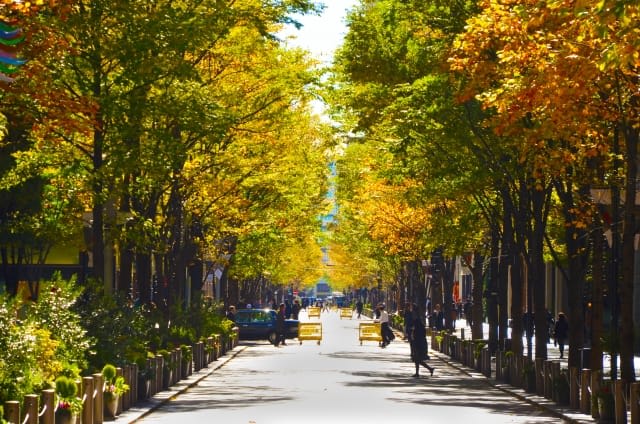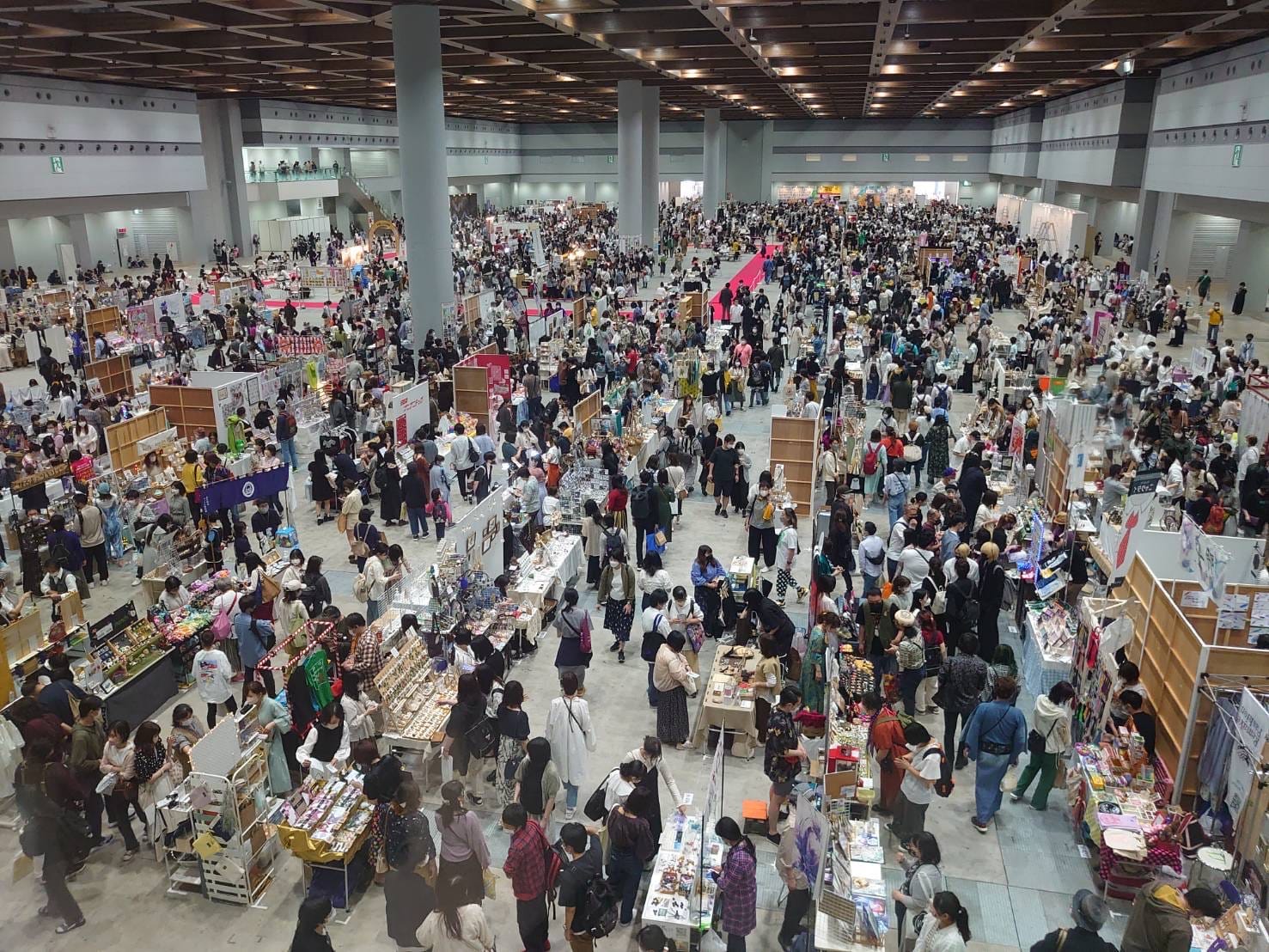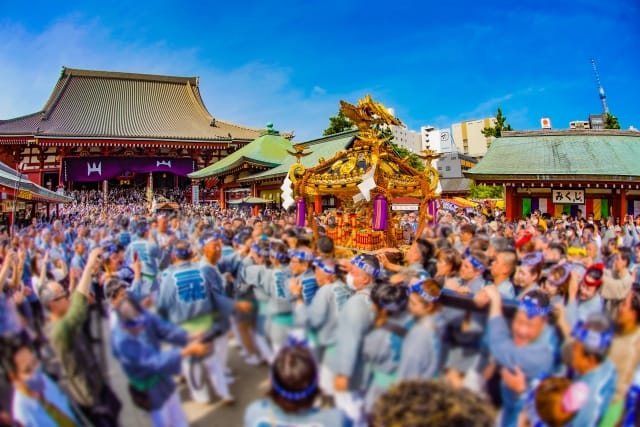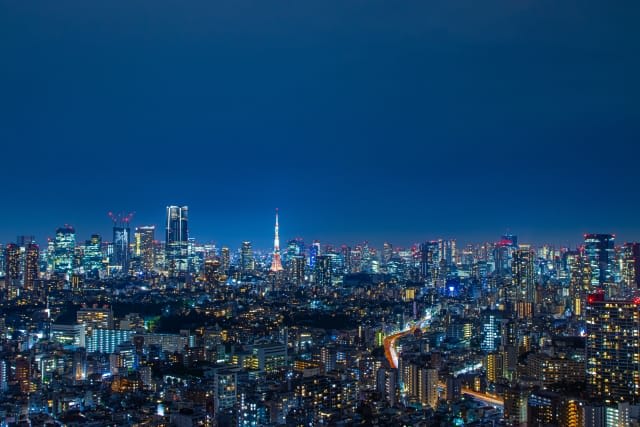Tokyo Autumn 2026: Colorful Foliage, Festive Events, and Seasonal Flavors
This time I wrote an article about Tokyo, a city I was born and raised. And I updated this article in January 2026 to incorporate my findings from this research, along with the latest information for 2026.
Another reason for updating the article is the growing interest in tours that allow visitors to safely and deeply experience Tokyo. Because Tokyo is a city that continues to develop at a dizzying pace and in complex ways, tourists visiting for the first time find it extremely difficult to discover the truly excellent spots beloved by locals.
This is why food tours led by knowledgeable local guides who know Tokyo inside and out have been gaining popularity, as they take visitors through Tokyo's maze of establishments.
In fact, Magical Trip's tour, which ranked #1 among all tours on Tripadvisor, has been receiving numerous applications.

If you want to experience authentic izakayas beloved by Shibuya locals, try the "Shibuya Bar Hopping Night Tour in Tokyo," which is ranked #2 on Magical Trip. A knowledgeable local guide who knows Shibuya inside and out will take you to spots where you can enjoy genuine Japanese cuisine.
And if you want to make the most of Tokyo's nightlife, you absolutely must join the "Tokyo Bar Hopping Night Tour in Shinjuku," which is rated #1 on Tripadvisor. You can safely explore Shinjuku's historic retro drinking districts and Kabukicho, the largest entertainment district in Asia, with an expert guide who knows Shinjuku thoroughly.
We hope you'll have a wonderful time experiencing everything Tokyo has to offer by joining a Magical Trip tour!
Introduction
Living in Tokyo, I'm always fascinated by how the entire city gradually turns golden and crimson as the heat subsides.
I still vividly remember strolling through the radiant ginkgo avenue at Meiji Jingu Gaien and enjoying autumn leaf viewing with friends at Shinjuku Gyoen.
Tokyo's autumn is not only filled with natural beauty but also overflows with cultural charm. The excitement of the Tori-no-Ichi Festival at Sensoji Temple and the atmosphere of streets bustling with costumed people on Halloween night were uniquely Tokyo experiences that I couldn't find anywhere else.
And above all, the richness of autumn flavors is exceptional. I still can't forget the taste of freshly grilled salted pacific saury I ate at Tsukiji Market (now Toyosu Market).
Although I couldn't go very often, the aroma of matsutake mushrooms savored at high-end restaurants and the sweetness of chestnut mont blanc enjoyed at street-corner cafes are etched in my memory as representative tastes of Tokyo's autumn.
In this article, I'll introduce you to the diverse charms of Tokyo's autumn, interspersed with my experiences. From famous spots for autumn leaves to seasonal events and autumn-only flavors, I'll provide information to help you fully enjoy Tokyo's autumn.
Table of Contents
・Tokyo's Autumn Attractions
・Tokyo's Autumn Flavors
・Things to Note When Enjoying Tokyo's Autumn
Tokyo's Autumn Attractions
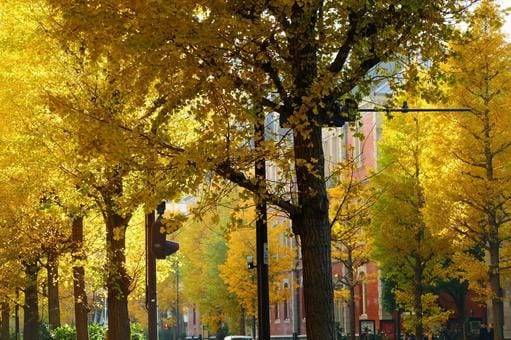
Tokyo's autumn is a captivating season where the beauty of nature and the vitality of the city blend perfectly. From September to November, the entire city gradually changes into its autumn attire.
Especially by November, autumn leaves begin to color various places, transforming the cityscape. Also, during this time, various autumn events are held, filling Tokyo's streets with excitement.
When this season arrives, I look forward to exploring new autumn leaf spots every weekend. I also get excited about uniquely autumn experiences in Tokyo, such as participating in Halloween events with friends or enjoying seasonal cafe menus.
Now, let me introduce you to the attractive spots and events that color Tokyo's autumn.
Autumn Leaf Spots
Tokyo has numerous spots where you can enjoy beautiful autumn leaves. If you venture a little out from the city center, you'll encounter spectacular autumn leaf views that feel like a different world. Let me introduce you to some of my favorite autumn leaf spots.
Shinjuku Gyoen
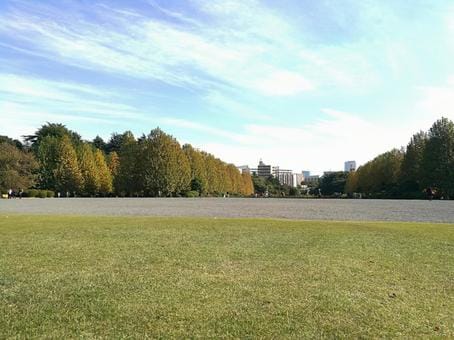
Shinjuku Gyoen is a special place where you can quietly enjoy autumn leaf viewing in a vast Japanese garden, despite being in the heart of Tokyo. The peak is from mid-November to early December.
When I first visited Shinjuku Gyoen, I was surprised that such beautiful nature could be found just minutes away from the hustle and bustle of the city. Autumn leaves from various tree species such as maple and zelkova colored the garden.
I especially recommend the nighttime illumination event. The autumn leaves illuminated by fantastical lights exude a different charm from daytime.
You can access Shinjuku Gyoen by a 5-minute walk from "Shinjuku-gyoenmae Station" on the Tokyo Metro Marunouchi Line, or a 10-minute walk from "Sendagaya Station" on the JR Sobu Line.
It's a valuable spot where you can feel the changing seasons while in the city center, so I highly recommend visiting.
Website: https://www.env.go.jp/garden/shinjukugyoen/english/index.html
Meiji Jingu Gaien
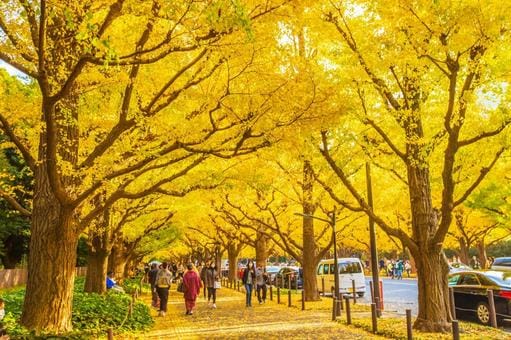
Meiji Jingu Gaien is particularly famous for its golden ginkgo avenue from late November to early December. The golden tunnel created by about 150 ginkgo trees is truly breathtaking.
When I first saw this sight, I was at a loss for words due to its beauty. This avenue is also popular as a photo spot, and on weekends, many people can be seen trying to capture this beautiful moment with cameras and smartphones.
I personally recommend visiting in the early morning. With fewer crowds, the ginkgo avenue illuminated by the morning sun is exceptionally beautiful.
You can access it by a 5-minute walk from "Shinanomachi Station" on the JR Chuo Line and Sobu Line, or a 5-minute walk from Exit 3 of "Gaienmae Station" on the Tokyo Metro Ginza Line.
Website: http://www.meijijingugaien.jp/english/
Rikugien

Rikugien is a daimyo garden from the Edo period where you can enjoy beautiful autumn leaves from late November to early December. The contrast between the Japanese-style landscape and the autumn leaves creates a spectacular view.
I visited Rikugien about 5 years ago at dusk in late autumn. The autumn leaves illuminated by the setting sun and the scenery reflected on the surface of the pond were incredibly beautiful, and the nighttime illumination was also wonderful.
The charm of Rikugien is not just enjoying the autumn leaves, but also appreciating the beauty of Tokyo's traditional gardens. The garden design that utilizes the undulating terrain and the tea houses are also worth seeing. I think it's a very luxurious experience to be able to relive the scenery that the daimyo of the Edo period loved while strolling.
You can access it by a 7-minute walk from the south exit of "Komagome Station" on the JR Yamanote Line, or a 7-minute walk from Exit 2 of "Komagome Station" on the Tokyo Metro Namboku Line.
Website: https://www.tokyo-park.or.jp/park/rikugien/index.html
Mount Takao

Mount Takao is a nature-rich mountain accessible by train in about an hour from central Tokyo, where you can enjoy beautiful autumn leaves from mid-November to early December. It's characterized by the autumn colors of diverse plants.
I last visited Mount Takao two autumns ago. The moment I left the hustle and bustle of the city center and found myself surrounded by clear air and colorful autumn leaves, I felt a sense of cleansing in my heart.
You can easily reach the summit using the cable car or lift, so even those who aren't confident in their physical fitness can easily enjoy the autumn leaves.
The view from the summit is exceptional. On a clear day, you can even see Mount Fuji in the distance. The contrast between the mountains colored with autumn leaves and the Tokyo cityscape spreading far away is truly spectacular.
Also, Mount Takao has various hiking courses of different difficulty levels, so you can enjoy autumn leaf viewing at your own pace while fully experiencing nature.
You can access Mount Takao immediately on foot from "Takaosanguchi Station" on the Keio Line. I think it's one of Tokyo's charms that you can enjoy such rich nature and beautiful autumn leaves just an hour away from the city center.
Autumn Festivals and Events
Tokyo's autumn is not only about beautiful autumn leaves but also various festivals and events that liven up the city. From traditional culture to modern events, diverse activities are held, filling the entire city with excitement. Let me introduce you to some of the events that left a particularly strong impression on me.
Asakusa Tori-no-Ichi Festival
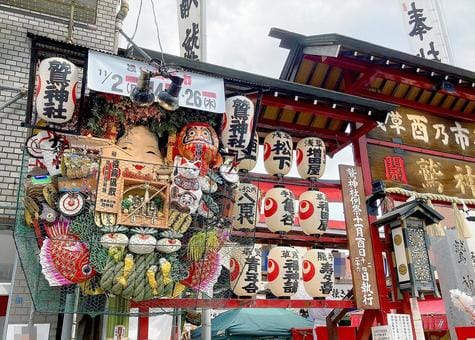
The Asakusa Tori-no-Ichi Festival is a traditional fair held three times on the Days of the Rooster in November. It's bustling with people seeking to buy the lucky charm "kumade," and is enveloped in a unique energy and excitement.
When I went to this festival, I was overwhelmed by the sight of Sensoji Temple's grounds and Nakamise Street turned into festival venues, overflowing with people until late at night.
I felt the power of Tokyo's traditional culture in the energetic calls of merchants holding kumade and the sight of people earnestly examining lucky charms.
Buying a kumade at Tori-no-Ichi is said to bring prosperity in business and good luck. I also bought a small kumade, and indeed, I feel like I had many good things happen that year. Perhaps it was the blessing of the kumade.
I think it's an event unique to Tokyo's autumn where you can enjoy the historic townscape of Asakusa and the bustle of the festival simultaneously. Please check the official website for this year's dates.
Website: https://torinoichi.jp/
Ikebukuro Halloween Cosplay Festival

The Ikebukuro Halloween Cosplay Festival is one of Tokyo's representative Halloween events held in late October every year. Large commercial facilities and parks around Ikebukuro Station become venues, and the sight of general participants in cosplay walking around the city is spectacular.
The creativity and enthusiasm of the participants, from anime and game characters to original costumes, are truly eye-opening.
This event is an excellent opportunity to experience Tokyo's pop culture firsthand. With many participants from overseas, the international atmosphere is also part of its charm. I think it's an event worth experiencing at least once as an autumn tradition in Tokyo.
Website: https://ikebukurocosplay.jp/
Design Festa
Source: Design Festa Official Website
Design Festa is Japan's largest art event, a creative exhibition where anyone, professional or amateur, can participate.
It's held twice a year (spring and autumn) mainly at Tokyo Big Sight, featuring exhibitors from various genres including art, fashion, illustration, design, and performance art.
What was particularly impressive was the ability to interact directly with creators. It was a valuable experience to hear about the background and creation process of works directly from the creators themselves. Being able to purchase works on the spot is also one of its attractions.
The charm of Design Festa lies in it being a free space for expression that transcends the boundaries between professionals and amateurs. You might encounter works by up-and-coming artists or gain unexpected inspiration.
There are also various workshops held within the venue where you can experience making things yourself.
This event is an excellent opportunity to experience the forefront of Tokyo's creative scene. I think that not only those interested in art, but also those who aren't, can enjoy this unique atmosphere.
Website: https://designfesta.com/
Tokyo's Autumn Flavors
Tokyo's autumn is not only about beautiful scenery and fun events but also a season of rich flavors. You can enjoy various autumn delicacies from fresh seafood to mountain harvests.
I'll introduce you to some seasonal ingredients and autumn-only sweets that have left a particularly strong impression on me.
Seasonal Ingredients
Pacific Saury
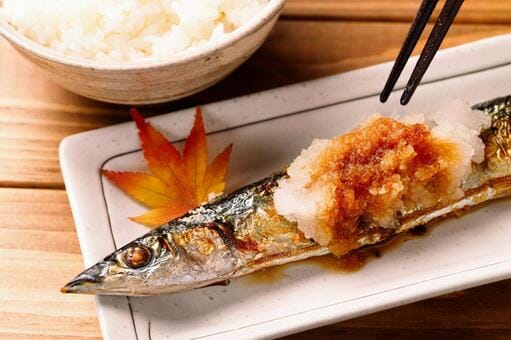
Pacific saury is a fish in season from September to November and can be considered a representative of autumn flavors. It's typically eaten grilled with salt.
In Tokyo, you can enjoy pacific saury at many izakayas, restaurants, and conveyor belt sushi restaurants. Especially at eateries around Tsukiji Market or Toyosu Market, you can taste fresh pacific saury. It's also easily available at supermarkets.
I think enjoying pacific saury with cold sake on a long autumn night is a luxurious time unique to Tokyo's autumn.
Matsutake Mushrooms
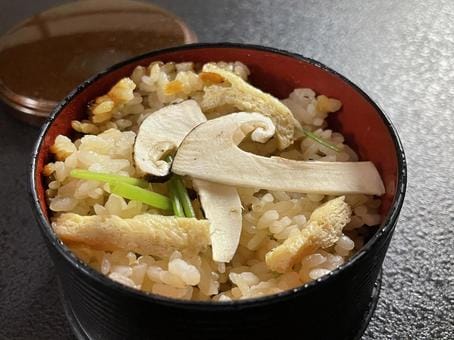
Matsutake mushrooms are known as a high-end ingredient in season from September to October. They are characterized by their unique aroma and texture and are highly valued in the world of Japanese cuisine.
I first tasted authentic matsutake cuisine at a high-end Japanese restaurant in Tokyo. The richness of its aroma and the flavor that spreads with each bite was something special that couldn't be experienced with other ingredients.
What particularly left an impression on me was the dobin mushi (seafood and matsutake steamed in a teapot). The moment when the aroma of matsutake rose with the steam, I felt the arrival of autumn with all my senses.
In Tokyo, you can enjoy matsutake dishes at high-end Japanese restaurants and hotel restaurants. Traditional dishes like matsutake rice and dobin mushi are of course available, but matsutake is also used as an ingredient in creative cuisine.
The price is certainly not cheap, but it's well worth enjoying as a luxury for special days.
Also, at department store food sections, you can sometimes find bento boxes and side dishes using matsutake when the season comes.
If you're savoring Tokyo's autumn, I highly recommend experiencing authentic matsutake cuisine at least once.
Autumn-Limited Sweets
Mont Blanc
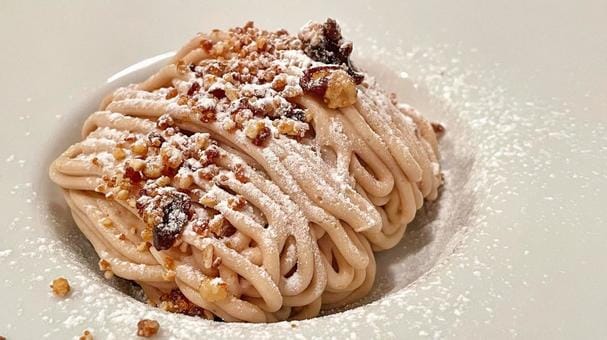
Mont Blanc is a classic autumn sweet made with chestnuts. In Tokyo, you can enjoy autumn-limited Mont Blanc at various places from famous patisseries to corner cafes.
Part of Mont Blanc's charm lies in its appearance. The chestnut cream piped thinly and piled up like a mountain is truly an autumn work of art.
It's also a popular subject on social media platforms like Instagram. If you search with the hashtag "#モンブラン" (Mont Blanc), you can see various beautiful Mont Blanc photos.
If you're enjoying autumn sweets in Tokyo, I recommend trying Mont Blanc from different shops. There's also the joy of tasting the individuality and ingenuity of each shop and finding your favorite Mont Blanc.
Things to Note When Enjoying Tokyo's Autumn
While Tokyo's autumn is attractive, there are several points to be aware of to enjoy it comfortably. Based on my experience, I'd like to offer advice on the characteristics of the climate and the best time to see autumn leaves.
Climate Characteristics
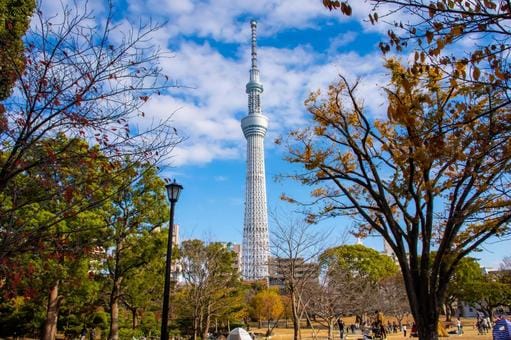
I'm often surprised by the temperature changes in Tokyo's autumn. September still has lingering summer heat, with days that can exceed 30°C (86°F).
From October to November, the climate gradually becomes more comfortable. While it's pleasant during the day with temperatures around 20°C (68°F), the temperature difference between morning and night becomes significant.
I've hurriedly put on a jacket several times, surprised by the morning chill. Layering is key during this season. By layering thin sweaters or cardigans, you can flexibly adapt to temperature changes.
By late November, winter cold begins in earnest. On some days, you might need a coat.
Particular caution is needed when going out for autumn leaf viewing. In mountains and parks, temperatures are lower than in urban areas. I once had an experience of shivering from cold on Mount Takao. It's reassuring to prepare warm outerwear, gloves, and scarves.
Best Time to See Autumn Leaves
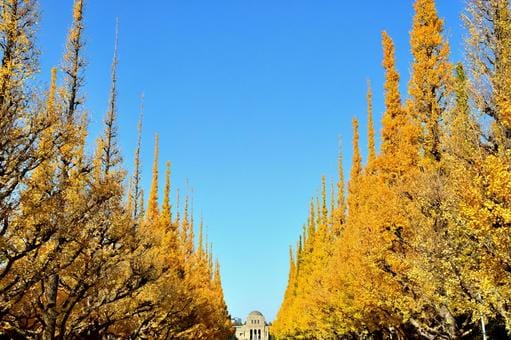
What I feel is most important in Tokyo's autumn is gathering information in advance. Generally, autumn leaves in Tokyo can be seen from late October to early December, but the peak viewing times differ depending on location and altitude.
For example, places with high altitude like Mount Takao tend to have earlier autumn colors, while the city center tends to be later.
I especially recommend checking official websites of each spot and tourism information sites from around October. Many famous autumn leaf spots regularly update their autumn color status. Every year, I used to frequently check this information to plan my autumn leaf viewing.
Also, the progress of autumn colors can change depending on weather conditions. Years with large temperature differences tend to have more vivid autumn colors, but leaves can fall due to typhoons or strong rain and wind.
I once had an experience where I visited an autumn leaf spot I was looking forward to, only to find that the leaves had scattered due to strong winds. I recommend checking weather forecasts as well.
Enjoy the best autumn leaf viewing with advance information gathering and flexible planning.
Tokyo's autumn is a special season where the beauty of nature, depth of culture, and richness of flavors harmonize wonderfully.
Parks and gardens colored with autumn leaves are healing spaces that make you forget the hustle and bustle of the city. The ginkgo avenue at Shinjuku Gyoen, nighttime illumination at Rikugien, views from Mount Takao - each has its own unique charm.
While there are some points to note when enjoying Tokyo's autumn, such as temperature changes and the best time to see autumn leaves, if you plan with these in mind, you should be able to have a more fulfilling experience.
After reading this article, I hope you fully enjoy the charms of Tokyo's autumn!
